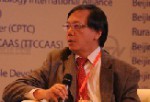Knowledge Management(KM) and its Relationship to ICM
Knowledge Management (KM)
“Knowledge Management” (KM) is an almost but not quite inter-changeable term for “Intellectual Capital Management”: ICM distinguishes itself in that it is purely driven by the aims of the organization and this in fact is the source of its powerful nature. KM is a more widely known term in Hong Kong because of the work of the Hong Kong Knowledge Management Society (founded around 1999 www.hkkms.org). In the earlier days of the introduction of ICM concepts to Hong Kong, KM was commonly associated with and driven as part of “Information Technology” or “Human Resource Management”. The term KM is also often linked to “Learning Organisation”, “Lifelong Learning” and “Continuous Improvement”.
Internationally, there are also many schools of thought regards KM, for example, “Social Network Analysis”, “Information Theory”, “Complexity Approach”, “System Thinking” and “Capacity Based Approach”. The most useful and dominant school links KM to the conversion of internalised tacit knowledge into explicit codified knowledge, thus allowing successful knowledge sharing (see Ikujiro Nonaka of Japan).
It should be noted that the term “Intellectual Capital Management”[3] (ICM) was introduced by Tom Stewart through an article on Intellectual Capital published in Fortune magazine in October 1994 after it was first mentioned in discussions in his presence. The key creators of the term ICM are: Leif Edvinsson (Sweden), Gordon Petrash (USA), Hubert St. Onge (Canada), Patrick Sullivan (USA) and their associates. The first company to adopt a full ICM approach was Skandia (a Swedish Insurance company) in the 1990s under the leadership of Leif Edvinsson. The early pioneers (seven companies that include Dow Chemical, DuPont, Hewlett-Packard, Hughes Space and Communication, Hoffman LaRoche and Skandia) also got together in January 1995 to exchange notes and formed the first ICM Gathering in Berkeley, California, USA. From the “Value Creation” stream as practiced in Europe by ICM gurus such as Leif Edvinsson and the “Value Extraction” stream as practiced by leading US companies a holistic approach now embracing value creation, value extraction and value release has emerged as a powerful business tool which is the new and more powerful form of Intellectual Capital Management practiced by far seeing organizations to stimulate long term sustainable value.
In Hong Kong, KM has yet to establish itself as a “killer management application”. It is still not perceived as something companies must do for the sake of their own long-term survival. Some say “KM” is for dreamers probably because KM practitioners in Hong Kong have yet to link “Learning” and “Sharing” to the hard nosed business of making a business profit (i.e. the emphasis on “Value Extraction” as practiced by US Companies).
[3] “A Brief History of the ICM Movement”, page 238-244 of “Value Driven Intellectual Capital”, by Patrick Sullivan, http://www.sveiby.com/portals/0/articles/icmmovement.htm



